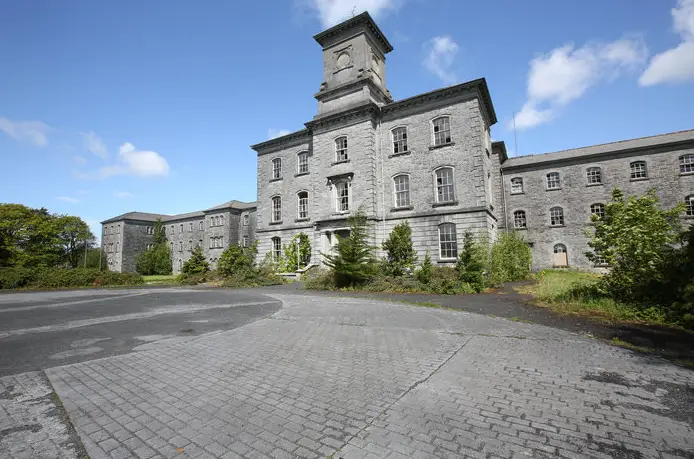*Our Lady’s Hospital. Photograph: DNG
A number of infrastructural requirements for Ennis including the development of Our Lady’s Hospital have been identified as part of the Draft Regional Spatial and Economic Strategy (RSES).
Ennis has been included as a key town in the RSES which has been put together by the Southern Regional Assembly and sets out aims to be achieved as part of the National Planning Framework. Kilkenny, Carlow, Tralee, Wexford and Clonmel have also been declared as key towns due to their “critical population mass”, “sphere of influence” and generation of economic activity.
With a current population of 25,276, Ennis is the largest town in Munster and the fifth largest settlement in the southern region. Since the Lichfield report in 1965, the triangle of Limerick-Shannon-Ennis was recognised as the economic engine of the Mid-West Region. The RSES acknowledged “the provision of the M18 has created a greater synergy and connection between Ennis and Galway” and the “potential to attract economic drivers/infrastructure such as Data Centres, in this context, Ennis should build on its current talent and skills offer and should attract a higher-level education campus”.
According to the draft, “the preparation of the ‘Ennis 2040 Economic and Spatial Strategy’ offers an opportunity to create a long-term strategy for the sustainable development of Ennis”.
It’s strategic location between Limerick and Galway, rail bus and motorway connectivity, proximity to internationally recognised tourism assets, electronics innovation, access to “high quality dark fibre broadband”, quality of life and culture plus Ennis General Hospital are deemed to be the main attributes of the town. Potential for development at the Roche site in Clarecastle (23 ha) and land at the Information Age Park (20.8 ha) are also highlighted.
Numerous infrastructural requirements are underlined in the RSES such as “to strengthen ‘steady state’ investment in rail infrastructure to ensure its continued renewal and maintenance to high level to provide quality levels of safety, service, accessibility and connectivity”. Several link roads including the Gort Rd (R458) to the Tulla Rd (R351), Drumcliff Rd (L4182) to the Lahinch Rd (N85), Drumcliff Rd (L4182) to the Gort Rd (R458) plus the Clon Rd (R871) to the Quin Rd (R469) are also earmarked.
Other requirements are “Water and wastewater infrastructure for phased growth. A Local Transport Plan including mobility management is essential to facilitate the delivery development of key town centre opportunity sites and public realm enhancement initiatives. The potential provision of a new access to the motorway from the Quin Road to alleviate significant amounts of heavy traffic from the town”.
Redeveloping Our Lady’s Hospital and enhancing “the potential for Green Infrastructure leaders between recreational facilities at Lees Road, West Clare Railway line, Ballyalla Lake, the River Fergus and Clarecastle” are other objectives. All infrastructural requirements identified for Ennis are “subject to the outcome of the planning process and environmental assessments”.
Regarding travel patterns, the RSES noted, “The Mid-West Area Strategic Plan (MWASP) 2012 -2030 identified that local passenger and national freight activity return from the available rails infrastructure is underutilised. Aside from Ennis – Limerick Junction and Dublin-Cork the condition of the commuter route infrastructure is variable with several speed restrictions in place”.
In a subsequent submission to the draft, Clare County Council stated that “a drainage area plan is required for Ennis town”. Senior Planner, Brian McCarthy referred to the front cover of the plan which includes a photograph of Ennis as a positive.

















